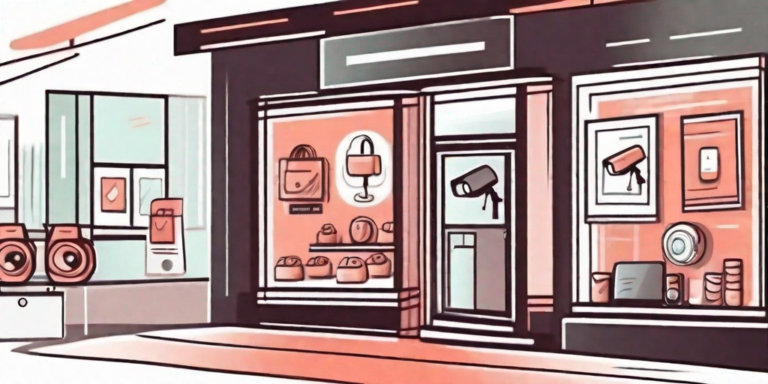In today’s world, building security is of utmost importance. Ensuring that our premises are safe and secure not only protects our assets but also provides peace of mind to occupants. However, many businesses are deterred from implementing robust access control measures due to budget constraints. The good news is that there are several budget-friendly strategies that can significantly enhance building security without breaking the bank. In this article, we will explore ten such strategies that can elevate your building security without draining your budget.
1. Enforce Controlled Entry: Identify and limit primary entrances to your building(s).
Building security is a top priority for any organization, and one of the most effective ways to enhance security is by controlling entry points. By carefully identifying and limiting the primary entrances to your building(s), you can create a secure environment that protects both your assets and your people.
When it comes to controlling entry points, it’s important to consider various factors such as the size and layout of your building, the number of employees and visitors, and the nature of your business. By taking these factors into account, you can determine the most strategic locations for your primary entrances.
Once you have identified the primary entrances, it is crucial to establish a centralized access point. This means that all visitors, employees, and contractors should be required to enter through a designated area where their identification can be verified and their purpose for entering can be assessed.
Having a centralized access point offers several advantages. Firstly, it facilitates the monitoring of individuals entering and exiting the premises. Security personnel can keep a close eye on everyone who enters the building, ensuring that only authorized individuals are granted access. This not only helps in preventing unauthorized access but also enables swift action in case of any security breaches.
Secondly, a centralized access point allows for better control over visitor management. By requiring all visitors to check-in at a specific location, you can ensure that they are properly registered and provided with appropriate identification badges or visitor passes. This helps in distinguishing between authorized visitors and potential threats, making it easier to identify and address any security concerns.
Moreover, a centralized access point enables efficient management of access control systems. By consolidating all entry points into one location, it becomes easier to implement and maintain access control measures such as keycard or biometric systems. This streamlines the process of granting and revoking access privileges, ensuring that only authorized individuals have the necessary permissions to enter restricted areas.
Lastly, a centralized access point enhances the overall security culture within your organization. By establishing a clear and visible entry point, you send a strong message to employees, visitors, and potential intruders that security is a top priority. This can create a sense of confidence and peace of mind among your staff, knowing that their safety is being taken seriously.
In conclusion, controlling entry points by identifying and limiting primary entrances is a crucial step in enhancing building security. By establishing a centralized access point, you can effectively monitor individuals entering and exiting the premises, prevent unauthorized access, manage visitor flow, and maintain efficient access control systems. Remember, building security is an ongoing process, and regularly reviewing and updating your entry point strategies is essential to stay one step ahead of potential threats.
2. Audit Access Privileges: Regularly review who has access to your premises.
Access privileges should never be set in stone. Regularly conducting audits to review who has access to your premises is crucial in maintaining a secure environment. Remove access privileges for individuals who no longer require them, and ensure that access is only granted to authorized personnel. By regularly reviewing access privileges, you can significantly reduce the risk of unauthorized access and elevate your building security.
When it comes to the security of your premises, it is essential to stay proactive. Conducting regular audits to review access privileges is a fundamental step in ensuring the safety of your building and its occupants. By doing so, you can identify any potential vulnerabilities or weaknesses in your security system and take appropriate measures to address them.
During an access privileges audit, it is important to thoroughly assess each individual’s level of access and determine whether it aligns with their current role and responsibilities. People’s roles within an organization can change over time, and it is crucial to update access privileges accordingly. By removing access for individuals who no longer require it, you can minimize the risk of unauthorized entry and potential security breaches.
Furthermore, it is vital to ensure that access is only granted to authorized personnel. Implementing strict protocols and verification processes can help in this regard. By verifying the identity and authorization of individuals before granting access, you can prevent unauthorized individuals from entering your premises and potentially compromising the safety of your building and its occupants.
Regularly reviewing access privileges also allows you to stay up-to-date with any changes in personnel. New employees may require access to certain areas, while others may no longer be part of the organization. By promptly updating access privileges, you can maintain an accurate record of who has access to your premises, reducing the risk of unauthorized entry.
Moreover, conducting access privilege audits demonstrates your commitment to security and instills confidence in your employees and stakeholders. It shows that you take the safety of your premises seriously and are proactive in addressing any potential security risks. This can have a positive impact on the overall morale and productivity of your workforce, as they feel assured that their safety is a top priority.
In conclusion, regularly reviewing access privileges is a crucial aspect of maintaining a secure environment. By conducting audits, removing access for individuals who no longer require it, and ensuring that access is only granted to authorized personnel, you can significantly reduce the risk of unauthorized access and enhance the overall security of your building. Stay proactive, stay vigilant, and prioritize the safety of your premises and its occupants.
3. Enhance Door Security: Install door contacts on all exterior doors.
Your exterior doors are the first line of defense against intruders. Enhancing door security is a cost-effective and efficient way to improve building security. Consider installing door contacts on all exterior doors, which will trigger an alarm if the door is forced open or left ajar. This simple yet effective measure can act as a deterrent and provide early notification of unauthorized access attempts.
4. Align Operating Hours with Safety Policies: Modify access control system to reflect new COVID-19 policies.
In light of the COVID-19 pandemic, many businesses have adjusted their operating hours and implemented new safety policies. It is essential to ensure that your access control system aligns with these changes. Modify access privileges and operating hours to reflect the updated policies. This way, you can maintain a secure environment while adhering to safety guidelines.
5. Eliminate Unnecessary Entry Points: Remove entry hardware from non-entrance exterior doors.
Unnecessary entry points can create vulnerabilities in your building’s security. Evaluate your premises and identify any non-entrance exterior doors that are not required for regular access. Remove entry hardware from these doors to discourage unauthorized entry attempts. Securing all non-essential entry points is an effective way to enhance building security on a limited budget.
6. Prevent Unauthorized Access: Collect and secure spare and master keys.
Keys are valuable assets that, if not properly managed, can compromise building security. It is crucial to collect and secure all spare and master keys. Implement a strict key management protocol to track the whereabouts of keys at all times. By preventing unauthorized access to keys, you can significantly reduce the risk of building security breaches.
7. Discourage Door Propping: Remove visible props from exterior doors.
Keeping doors propped open for convenience can jeopardize building security. Remove visible props from exterior doors to discourage individuals from propping them open. Propped doors create opportunities for unauthorized access and compromise the safety of your building. Encourage occupants to utilize proper entry and exit procedures to maintain a secure environment.
8. Monitor Sensitive Areas: Set up custom alerts for high-security zones.
Certain areas within your building may require heightened security due to sensitive information or valuable assets. Set up custom alerts for these high-security zones to be immediately notified of any unauthorized access attempts. This proactive approach allows you to respond swiftly and mitigate potential security risks effectively.
9. Maintain Door Integrity: Regularly inspect all mechanical door hardware.
Well-maintained door hardware is essential for effective access control. Regularly inspect all mechanical door hardware, such as locks, hinges, and closers, to ensure they are in good working condition. Address any issues promptly to prevent security vulnerabilities. By prioritizing door integrity, you can maintain a strong line of defense against unauthorized access.
10. Stay Updated: Regularly upgrade your access control software.
Technology advancements have enabled access control systems to become more sophisticated and efficient. Regularly upgrading your access control software ensures that you benefit from the latest security features and enhancements. Stay informed about updates and patches released by the software provider and promptly upgrade your system to maximize building security.
Elevating building security is a necessity for any business, regardless of budget constraints. By implementing these ten budget-friendly access control strategies, you can significantly enhance the safety and security of your premises. Remember, building security is an ongoing process, and it requires consistent efforts and periodic evaluations. Prioritize building security, invest in appropriate measures, and create a secure environment for everyone in your building(s).






